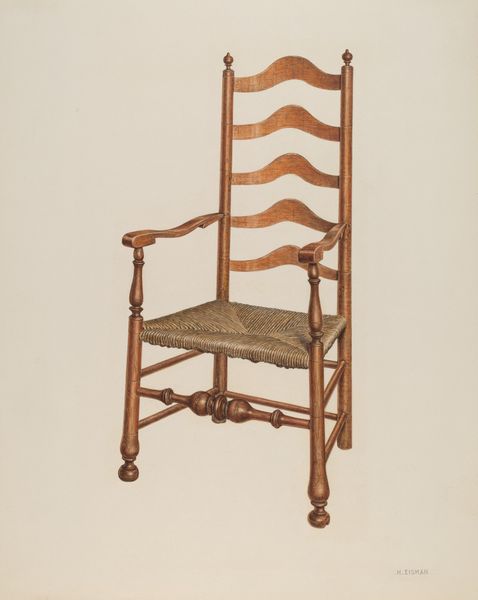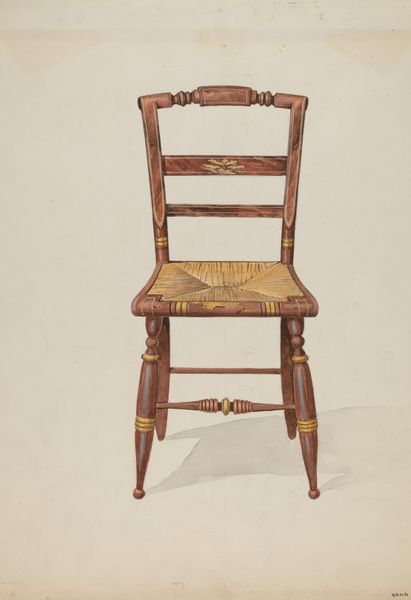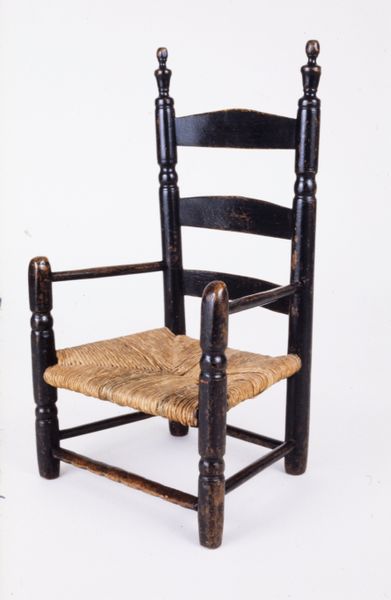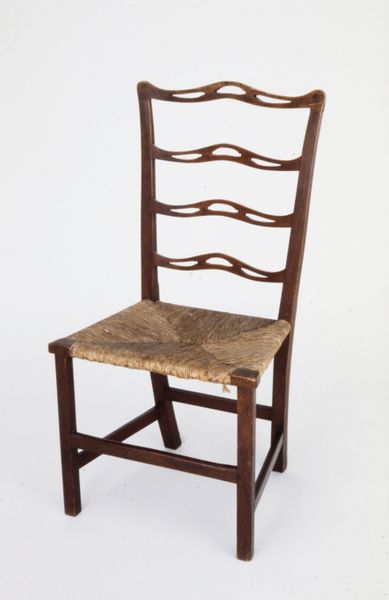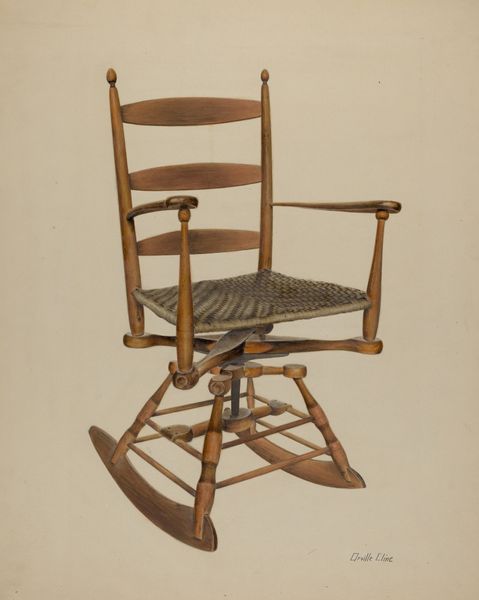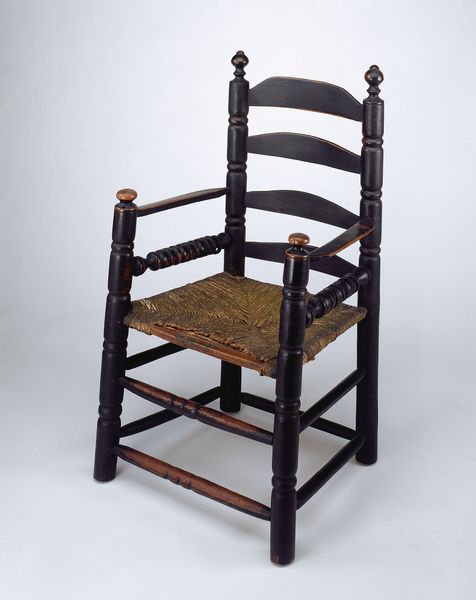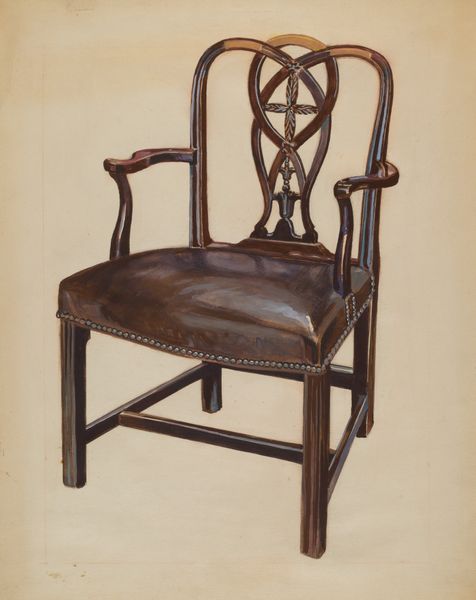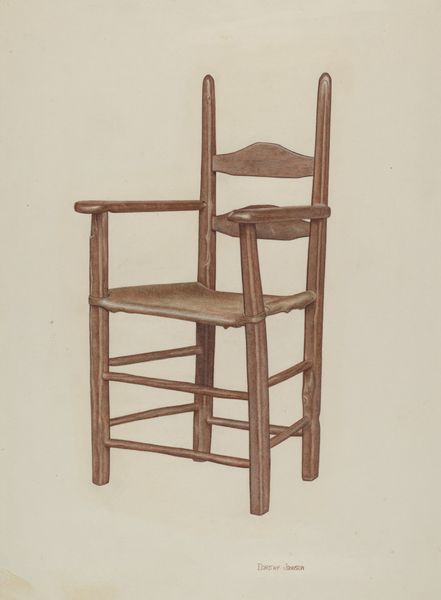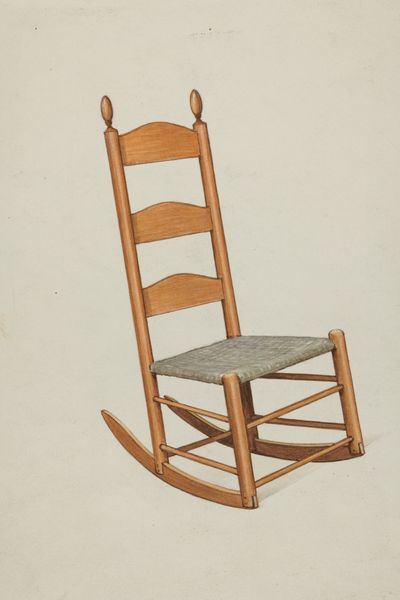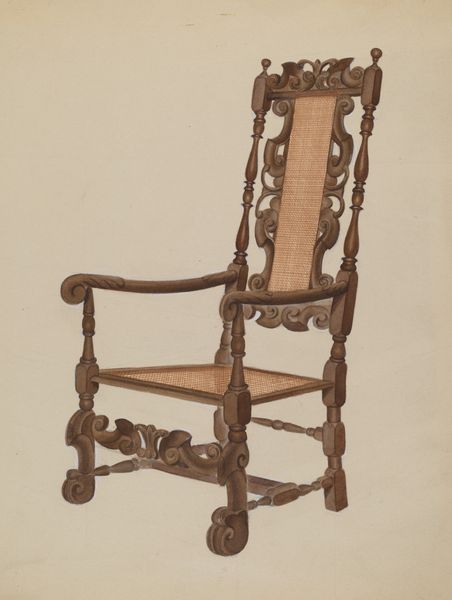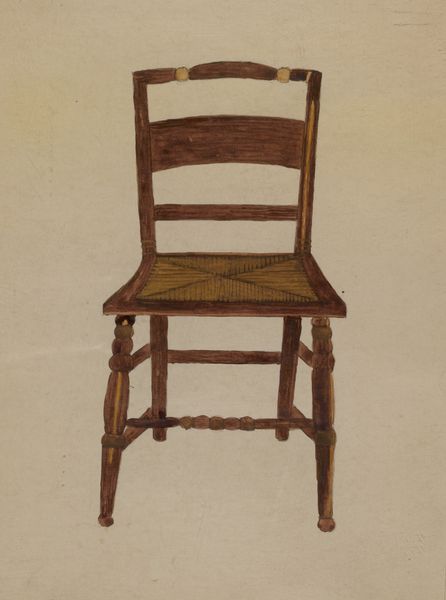
drawing
#
drawing
#
watercolor
Dimensions: overall: 37.9 x 28.7 cm (14 15/16 x 11 5/16 in.) Original IAD Object: 92 cm high, 57 cm wide.
Copyright: National Gallery of Art: CC0 1.0
Curator: Standing before us is "Armchair," a drawing by Isadore Goldberg, completed in 1941. It depicts a chair in watercolor. Editor: There's an immediate sense of craft and rustic charm about it, though maybe slightly static in its presentation. It almost feels more like a blueprint. Curator: That static quality resonates with the social realism favored during that period, documenting everyday objects with a straightforward gaze. We see so much emphasis placed on objects like this as documents, as things worthy of preservation and reflection. Editor: Precisely! The use of watercolor brings a lightness, juxtaposed against the rather heavy construction of the wooden frame and the woven seat. Look at how the process reveals a tactile, almost haptic quality, making the material come alive. It hints at the labor and the knowledge it takes to produce this piece. Curator: Considering the social context, this chair can be read as a symbol of domesticity, even labor—a space often assigned to women within the home. Its accessibility meant a wide swathe of the public had the ability to participate, in some capacity, whether through the use or even creation of this object. Editor: It speaks volumes about class, doesn't it? The relatively simple construction compared to the ornamentation of furniture created for more well to do patrons. The chair as the symbol of functionality and egalitarianism in a period defined by the social struggles that defined that era. Curator: In our intersectional and politically driven times, a work like "Armchair" provokes essential conversations. Who does such a commonplace object serve, how is its story woven with narratives of gender, class and more? Editor: Indeed, by emphasizing material processes and accessible materials, it allows us to question and, hopefully, dismantle those constructed boundaries around craft. The chair transcends mere function, telling the stories of who creates them, who profits from them and what can we expect when things are stripped down to just its material makeup. Curator: Exactly. I now see the quiet profundity within it. The drawing now operates as a potent trigger to the dialogue of identity, societal roles, and the dignity of labor. Editor: A potent reminder of how the everyday contains powerful reflections of human creativity. It brings it to bear how each piece, when created within its socio economic context, represents so much more.
Comments
No comments
Be the first to comment and join the conversation on the ultimate creative platform.
